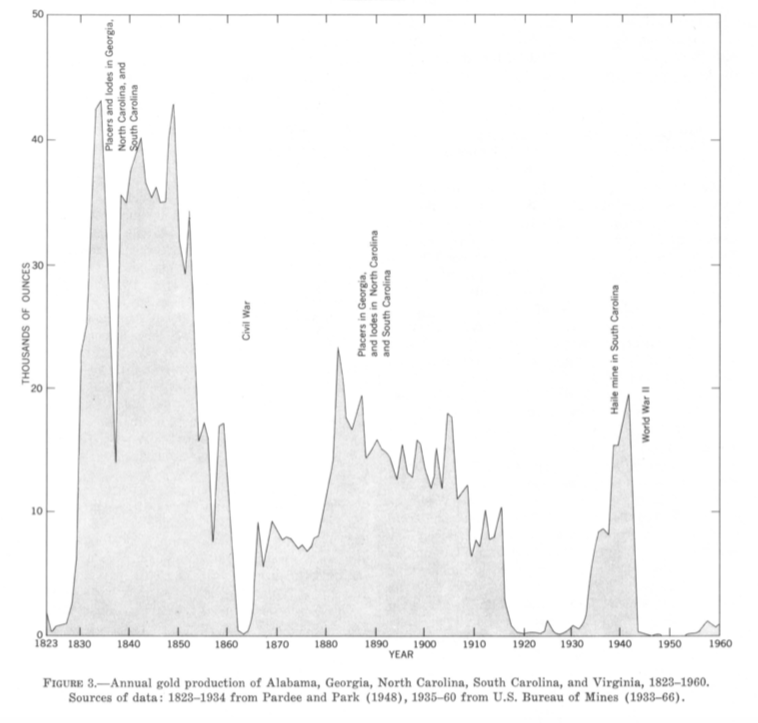
Most of the eastern states have only small deposits of glacial gold, but Virginia has hard rock deposits. It was one of the first states to show gold, and most of that gold comes from the “gold-pyrite” belt approximately 9 to 15 miles wide, running 140 miles along the Blue Ridge Mountains’ eastern side.
Other mines outside of the belt exist also. Gold can still be located in any of the places where gold was found in the past.
Although mining didn’t really begin until 1804, there were some small discoveries in 1785. Beginning in 1828, the state averaged about 3000 ounces per year, with a record year over 6000 ounces. At its peak, there were several hundred mines being worked in Virginia.
Mining boomed up until gold was discovered in California, when most miners headed west as quick as they could to get rich. Only a small amount of mining continued in Virginia after the California gold rush started. Almost all the gold found in Virginia today is found by recreational prospectors.

Also Read: Gold Prospecting in Maryland
Within the belt long the Blue Ridge Mountains are good bets for the prospector, as placer gold can be found in many of the rivers and creeks. Stick with the historically mined areas. The counties noted for their mining history include: Prince Edward, Fluvanna, Cumberland, Buckingham, Facquier, Madison, Culpepper, Orange and Louisa Counties.in Facquier County is home of the Franklin Mine, which is one of the most famous in Virginia, but there are many other lode mines in the southeastern section of the county as well.
Heading to the west, Caroll County and Dinwiddie County in the southeast has hard rock deposits scattered throughout the area.
With some patience, time and research, you should be able to find some color. Larger equipment will help you process more material once you find a rich area.
Next: Finding Gold Nuggets with a Sluice Box
Also Read: Gold Prospecting in North Carolina
